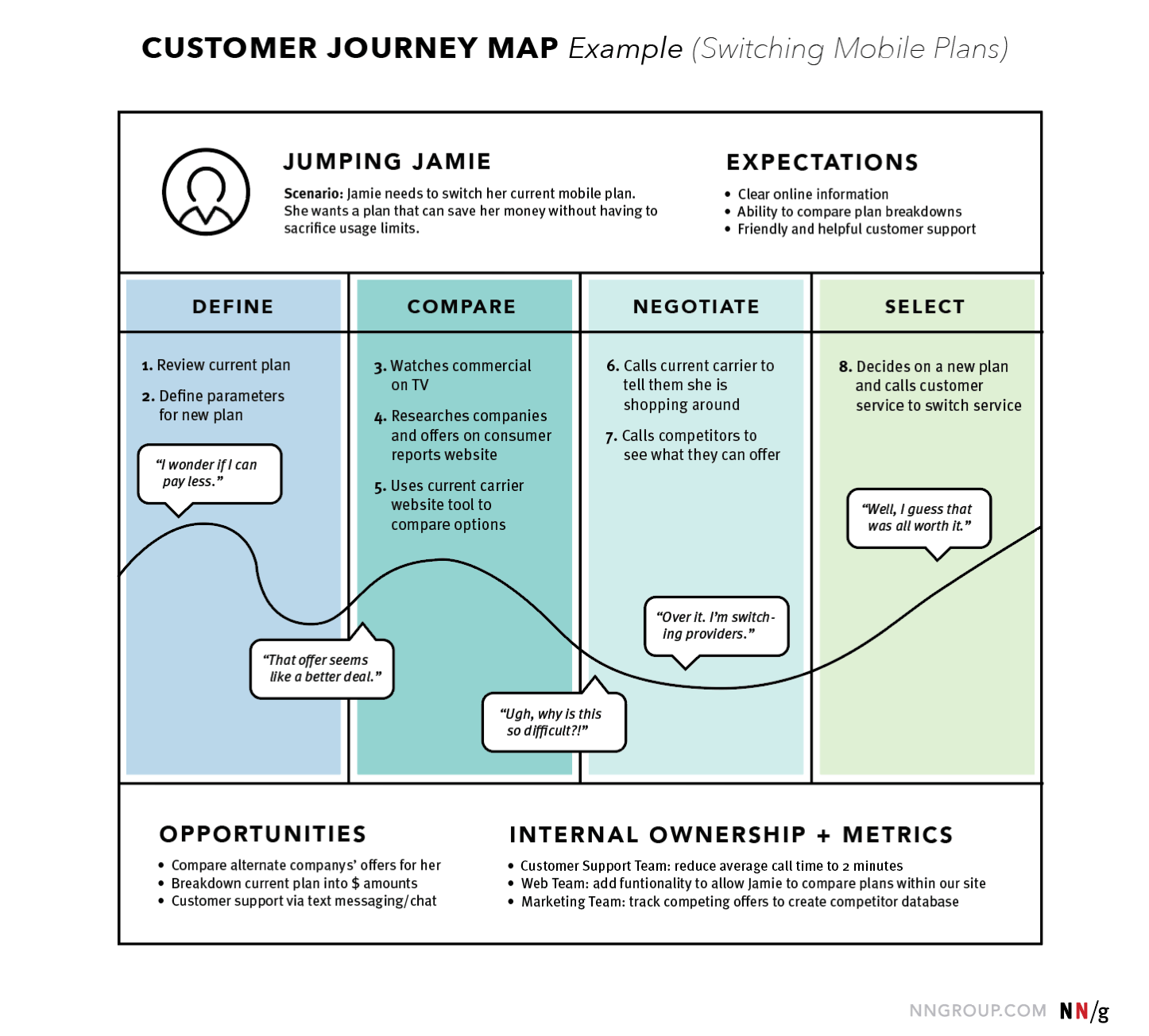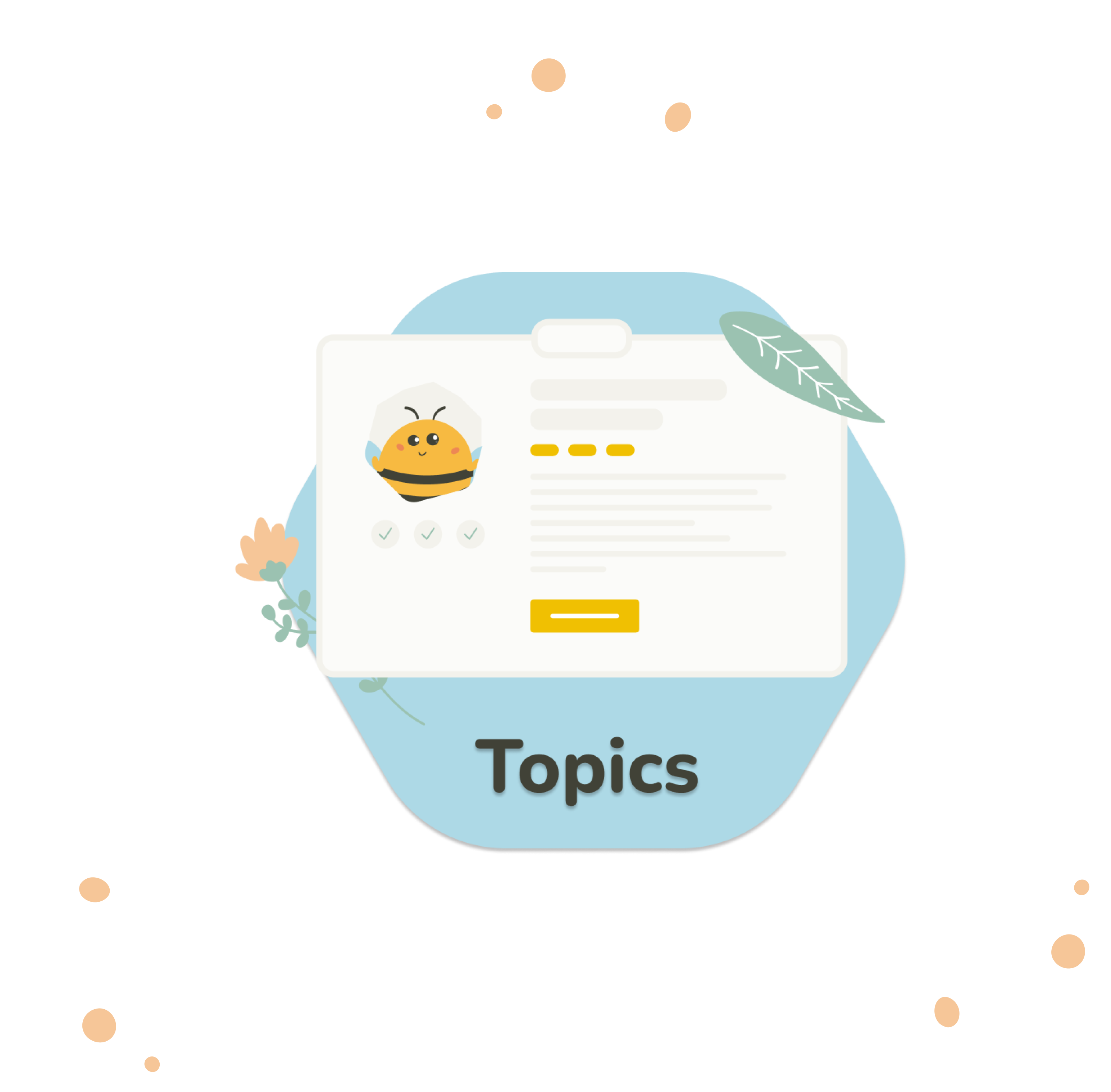User journey maps come in all shapes and sizes, depending on the type of product, persona and the goals you’ve defined for the research project. We understand it can be confusing to come up with your own structure suitable for your specific use case. That’s why we gathered 5 different user journey map examples to make sure you have something to look up to when working on your own map.
It’s always easier to create something based on the examples of professionals who’ve already done it!
In examples below we go through user journey maps of:
- NN/Group
- Spotify
- Hubspot
- UXPressia
- Indian Railways
Example 1: NN/group
We chose NN/group’s user journey map as the first example for one reason. It’s very simple and easy to recreate and can serve as the most basic template with all the crucial components inside. In this particular case, we’re looking at the user journey map of the Jumping Jamie, who is looking to switch her mobile plans in order to save money.
The map perfectly outlines the 4 user stages she goes through: define, compare, negotiate, select.
We can see that at each stage Jamie completes different steps on the way to her final goal. We can also see the feelings she has along the way and the line which represents her emotions, going from the low to high points, depending on her satisfaction with the experience. The bottom of the map serves as the conclusion, defining the opportunities for improving the customer journey and internal ownership.

Source: NN/group
Example 2: Spotify
Spotify’s map for improving their music sharing experience is a great example of a B2C customer journey map. It was created as a part of a design project with the goal to add a music sharing feature that would allow listeners to send each other playlists and songs either within the platform or using other platforms. The project included customer journey mapping together with developing a persona as a part of the research stage. Check out the full Spotify case study to learn more.
As we can see on this map, there are a lot more stages a typical Spotify user goes through. Their thoughts and actions are described a lot more detailed and there are also additional sections such as touchpoints and actors. This map helped the design team understand at which point and why users get motivated to share music with each other. One of the key insights was that users are much more likely to share a song when the sharing feature is visible to them.
Meghana Bowen, a UX designer who worked on the project talks about pain points they uncovered: “The biggest pain points discovered during the research stage was that the participants were worried about being judged for their music habits, as well as, most users were not aware of a share functionality existing.”

Example 3: Hubspot
In 2018 Hubspot created their own customer journey map and wrote a whole article about it providing you tips to create your own.
They chose a classical linear structure and used color-coding to make it more readable. A great idea was to add testimonials of their actual customers dealing with the product during the user research stage. This helped to empathize with them better, make existing problems feel more real and urgent and justify the data about their feelings.
It’s also a great thing to add for those who you’ll be presenting your user journey map to. These people will not be completely familiar with the research process behind it, but reading the testimonials could help them get more context on what’s going on at each stage of the journey.
Example 4: UXPressia
Another user journey map example, this time by UXPressia. It perfectly represents the B2B customer journey, outlining the stages a user goes through while making a purchase, from awareness to bonding or detachment.
UXPressia’s user journey map also includes 2 handy sections: barriers and motivators, that they describe under each stage. We can see that while there are no detailed emotions described at this map (as in the previous ones, for example), it’s still informative due to the motivators and barriers sections.
That again proves that user journey maps can and should look differently, as long as they are informative and clearly represent your user’s POV.

Example 5: Indian Railways
Our last example will be a user journey map created by Deepika Sinha from a research case study found on Behance. The study was conducted with a goal of improving the mobile UX of an Indian Railway app. You can check out the whole case study here.
This is a great example of how you can make an informative user journey map while still keeping it clean, visually appealing and not scary to read. The map shows the experience of booking tickets through the app, describes the pain points a user goes through and the opportunities for designers to improve the experience.

How to create a user journey map?
Creating a user journey map is an iterative process that not only includes building a map itself, but also a lot of user research and usability testing done throughout the whole process.
Creating a user journey map for your specific persona helps to look at the product from their point of view, uncover pain points and opportunities for fine-tuning the user flow in order to make it more intuitive.
To create a user journey map we recommend following these 7 steps:
- Set the objectives
- Define user personas
- Get to know your audience
- Define the journey phases
- Map out each phase
- Validate the user journey
- Identify confusions and areas of improvement
Check out our user journey map page, where we explain each of the steps in detail and walk you through the process of creating your own map.
Get access to actionable templates and examples! Learn how to create the perfect customer journey map today with our free ebook guide. ⬇️





